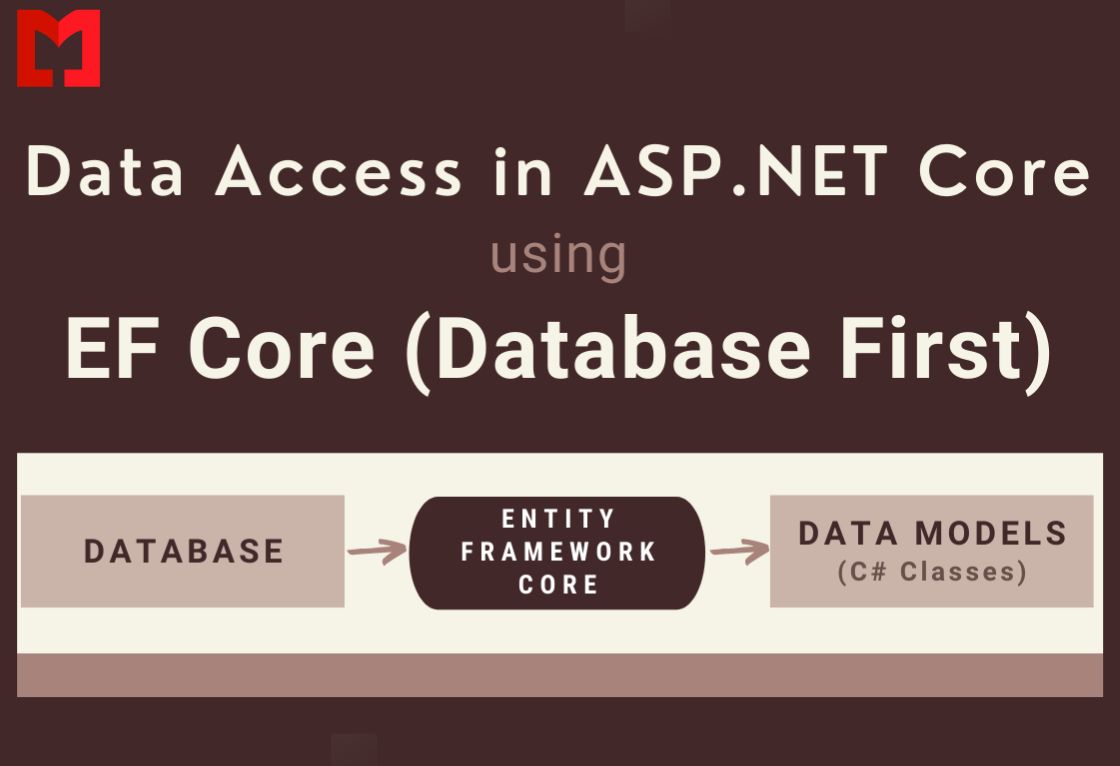Introduction
Entity Framework Core (EF Core) is the preferred Object-Relational Mapper (ORM) for ASP.NET Core development. It simplifies database operations by allowing developers to work with C# objects instead of SQL queries.
Many businesses looking for ASP.NET development services rely on EF Core to build scalable applications with efficient database access. Whether you’re working on a web application, enterprise software, or an API, understanding EF Core is essential for smooth database interactions.
If you’re planning to hire ASP.NET developers, knowing how they use EF Core can help ensure your project follows best practices for performance and scalability.
What is Entity Framework Core?
Entity Framework Core is an open-source, lightweight ORM that enables developers to work with databases using C# objects. It is the successor to Entity Framework 6 and is built specifically for .NET Core and .NET 5+ applications.
Why Use EF Core?
✅ Eliminates the need for complex SQL queries
✅ Supports multiple database providers (SQL Server, PostgreSQL, MySQL, etc.)
✅ Enables automatic database migrations
✅ Improves maintainability with a clean data access layer
✅ Supports asynchronous programming for better performance
Many ASP.NET development companies use EF Core to speed up development and reduce database-related errors in their applications.
Setting Up Entity Framework Core
1. Install EF Core in an ASP.NET Project
To use EF Core in an ASP.NET Core project, install the required NuGet packages:
bash code:
dotnet add package Microsoft.EntityFrameworkCore
dotnet add package Microsoft.EntityFrameworkCore.SqlServer
dotnet add package Microsoft.EntityFrameworkCore.Tools
💡 Tip: The database provider depends on your choice. For PostgreSQL, use:
bash code:
dotnet add package Npgsql.EntityFrameworkCore.PostgreSQL
2. Configure the Database Context
The DbContext class represents the session with the database. Create a MyDbContext.cs file:
csharp code:
using Microsoft.EntityFrameworkCore;
public class MyDbContext : DbContext
{
public MyDbContext(DbContextOptions<MyDbContext> options) : base(options) { }
public DbSet<Product> Products { get; set; }
}
3. Define the Model (Entity Class)
Entities represent database tables in EF Core.
csharp code:
public class Product
{
public int Id { get; set; }
public string Name { get; set; }
public decimal Price { get; set; }
}
4. Configure EF Core in Startup.cs or Program.cs
Add EF Core to your application’s dependency injection container:
csharp code:
builder.Services.AddDbContext<MyDbContext>(options =>
options.UseSqlServer("Your_Connection_String"));
🔹 Tip: Store connection strings securely using environment variables or appsettings.json.
Using EF Core for Database Operations
EF Core provides an easy-to-use API for CRUD operations.
1. Adding Data to the Database
csharp code:
using (var context = new MyDbContext(options))
{
var product = new Product { Name = "Laptop", Price = 999.99M };
context.Products.Add(product);
context.SaveChanges();
}
2. Retrieving Data from the Database
csharp code:
var products = context.Products.ToList();
🔹 Tip: Use asynchronous queries for better performance:
csharp code:
var products = await context.Products.ToListAsync();
3. Updating Data
csharp code:
var product = context.Products.FirstOrDefault(p => p.Id == 1);
if (product != null)
{
product.Price = 899.99M;
context.SaveChanges();
}
4. Deleting Data
csharp code:
var product = context.Products.FirstOrDefault(p => p.Id == 1);
if (product != null)
{
context.Products.Remove(product);
context.SaveChanges();
}
Best Practices for Using EF Core
1. Use Migrations for Database Changes
Instead of manually altering the database schema, use EF Core Migrations:
bash
dotnet ef migrations add InitialCreate
dotnet ef database update
💡 Tip: Regularly apply migrations to keep database and code in sync.
2. Use Asynchronous Methods for Performance
EF Core supports async operations, which improve scalability in web applications:
csharp code:
var products = await context.Products.ToListAsync();
🔹 Why? Asynchronous methods prevent blocking and allow better resource management.
3. Avoid N+1 Query Problems
Fetching related data inefficiently can cause performance issues. Instead of:
csharp
var orders = context.Orders.ToList();
foreach (var order in orders)
{
var customer = context.Customers.Find(order.CustomerId);
}
Use Eager Loading with .Include():
csharp code:
var orders = context.Orders.Include(o => o.Customer).ToList();
4. Use Connection Pooling
For high-traffic applications, connection pooling improves performance:
csharp
builder.Services.AddDbContextPool<MyDbContext>(options =>
options.UseSqlServer("Your_Connection_String"));
5. Secure Your Database Connections
🔹 Store connection strings securely in environment variables or Azure Key Vault.
json code:
{
"ConnectionStrings": {
"DefaultConnection": "Your_Connection_String"
}
}
Common Pitfalls to Avoid
❌ 1. Not Disposing DbContext Properly
Use using statements or dependency injection to manage DbContext lifespan efficiently.
❌ 2. Ignoring Indexes
Create indexes for frequently queried columns to speed up searches:
csharp
[Index(nameof(Name))]
public class Product
{
public int Id { get; set; }
public string Name { get; set; }
}
❌ 3. Fetching Unnecessary Data
Use projections instead of loading entire objects:
csharp code:
var productNames = context.Products.Select(p => p.Name).ToList();
Why Hire an ASP.NET Development Company for EF Core Projects?
If you’re building a high-performance application, working with an experienced ASP.NET development company ensures:
✅ Efficient database design and architecture
✅ Optimized queries for performance
✅ Secure and scalable applications
✅ Faster development with best practices
Many businesses choose to hire ASP.NET developers to avoid common EF Core pitfalls and ensure smooth database operations.
Conclusion
Entity Framework Core simplifies database access in .NET applications, making it easier to manage data without writing complex SQL queries. By following best practices like using async methods, preventing N+1 queries, and securing database connections, you can improve your application’s performance and scalability.
If you’re looking for ASP.NET development services, hiring expert .NET developers ensures your application is built with efficiency, security, and scalability in mind.
💡 Need help with EF Core? Hire an ASP.NET development company today and build a high-performance .NET application! 🚀
Relevant Hashtags
EF Core & .NET Development Hashtags:
#EntityFrameworkCore #EFCore #DotNet #DotNetCore #DotNetDevelopment #ASPNet #ASPNetCore #DotNetWebDevelopment #CSharp #CSharpProgramming #DatabaseDevelopment #SQL #SQLServer #MySQL #PostgreSQL #MongoDB #DatabaseOptimization #CloudComputing #FullStackDevelopment
